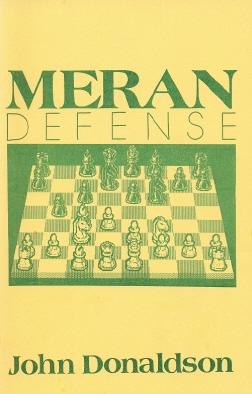
Edward Winter
Richard J. Hervert (Aberdeen, MD, USA) points out that the entry on the Meran Variation in The Oxford Companion to Chess by D. Hooper and K. Whyld (Oxford, 1984) erred by stating that the opening was adopted ‘by Rubinstein and Tartakower during the Meran tournament 1924’. Tartakower was not a participant.
The mistake survived in the 1992 and 1996 editions of the Companion, the relevant part of which (page 257) reads:
‘The idea was tried in Schlechter-Perlis, Ostend, 1906, and Capablanca-Bernstein, Moscow, 1914, and a similar plan was used in the 17th match game, Steinitz-Lasker 1897, for example, but the variation came into fashion only after its adoption by Rubinstein and Tartakower during the Meran tournament 1924.’
Tartakower had already been mentioned similarly in other reference books, e.g. on page 257 of the Dictionnaire des échecs by F. Le Lionnais and E. Maget (Paris, 1967):
‘Cette ligne de jeu doit son nom ŕ la ville italienne oů Rubinstein et Tartakover la mirent ŕ la mode au cours du Tournoi de Merano 1924.’
And from page 95 of the Diccionario de ajedrez by R. Ibero (Barcelona, 1977):
‘Esta defensa, popularizada por Rubinstein y Tartakover durante el torneo de Merano (1924) ...’
Or again, from page 131 of the Dictionary of Modern Chess by Byrne J. Horton (New York, 1959):
‘This defense receives its name from Meran, Austria, the place where Rubinstein and Tartakower popularized this opening procedure.’
The reference to Austria (instead of Italy) is also to be found on page 186 of An illustrated Dictionary of Chess by Edward R. Brace (London, 1977):
‘It was named after the Austrian resort of Meran, in which Akiba Rubinstein first played this variation during an international tournament in 1924.’
The Dizionario enciclopedico degli scacchi by A. Chicco and G. Porreca (Milan, 1971) was on firmer ground in commenting on page 182:
‘La Difesa di Merano, che si incontra per la prima volta in versione moderna nella partita Grünfeld-Rubinstein giocata a Merano nel 1924 ...’
That game between Grünfeld and Rubinstein was analysed in depth by Tartakower on pages 367-370 of Die hypermoderne Schachpartie (Vienna, 1925), and the 1906 game between Schlechter and Perlis was duly mentioned. On pages 521-523 of 500 Master Games of Chess by S. Tartakower and J. du Mont (London, 1952) the game also appeared, with the following introductory remark:
‘Moves six to ten by Black represent an appropriate defence for an enterprising player. Played for the first time in the present game, it has been named the Meran Variation.’
The Tartakower/du Mont book stated that the defence in question arose from the moves 6 Bd3 dxc4 7 Bxc4 b5 8 Bd3 a6 9 O-O c5 (10 a4 b4). On the other hand, the two Tartakower books under discussion disagreed on the order of the first few moves in the Grünfeld v Rubinstein game. So do other sources, contemporary and modern.
The Oxford Companion (page 464 of the 1992/1996 edition) gave the term ‘Meran Variation’ to 1 d4 d5 2 c4 e6 3 Nc3 c6 4 Nf3 Nf6 5 e3 Nbd7 6 Bd3 dxc4, after which 7 Bxc4 b5 8 Bd3 a6 led to lines named after various players. The Meran Defense by John Donaldson (Coraopolis, 1987) regarded 7...b5 as the identifying move of the opening, as indicated by the front-cover illustration:

The Chicco/Porreca Dizionario, the Le Lionnais/Maget Dictionnaire and the Brace Dictionary agreed on this point, but other reference books have defined the opening otherwise. For instance, Horton’s Dictionary and Ibero’s Diccionario mysteriously give the following moves as the Meran Defence: 1 d4 d5 2 Nf3 Nf6 3 c4 e6 4 Nc3 c6 5 e3 Nbd7.
In short, the Meran terminology is chaotic, quite apart from such further appellations as the Accelerated Meran, Anti-Meran and Semi-Meran.
To these jottings we add some citations in pre-Second World War articles:
Finally, below is a group photograph of Meran, 1924. Readers are invited to try their hand at identifying all present.
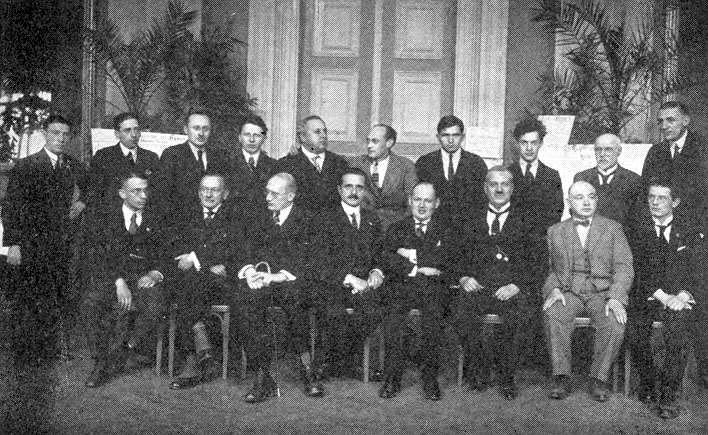
(4635)
Luca D’Ambrosio (Bolzano, Italy) submits a key based on information in L’Italia Scacchistica, 6 April 1924, page 3, and Het Schaakleven, 15 March 1924, page 125. The names in brackets below were given only by the latter publication.
Standing, from left to right:
(Balaban), E. Colle, A. Selesniev, K. Opočenský, G. Patay, S.
Takács, L. Steiner [not E. Steiner – see C.N. 4808], G.
Koltanowski, I. Gunsberg, (Michel).
Seated: J.A. Seitz, S. Tarrasch, E. Grünfeld, S.
Rosselli del Turco, R. Spielmann, L. Miliani, D. Przepiórka,
(Grim).
Our correspondent asks whether a group photograph exists of the Meran, 1926 tournament (won by Colle ahead of Canal, Przepiórka and Spielmann).
(4669)
Peter Anderberg (Harmstorf, Germany) reports that such a picture was published in Kagans Neueste Schachnachrichten, 1927, ‘Erstes Extrablatt’ (page 153). Since our bound volume of that year’s magazine includes the Extrablatt in photocopy form only, can a reader provide a good copy of the photograph for reproduction here?
(4676)
Michael Negele (Wuppertal, Germany) has provided the group photograph of Meran, 1926 referred to in C.N. 4676:
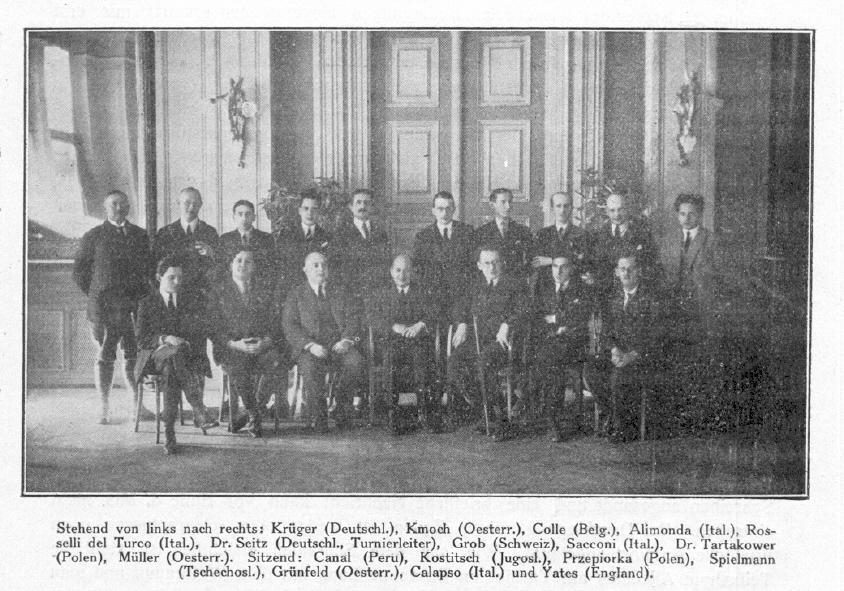
(4686)
Which of the Steiner brothers, Endre (also known as Andreas) or Lajos, was a participant in Meran, 1924? The crosstable on page 63 of the March 1924 La Stratégie was obviously wrong with ‘Steiner, S.’. The BCM (March 1924, page 89 and April 1924, page 129) had ‘A. Steiner’, and this was followed by Jeremy Gaige on page 631 of volume four of Chess Tournament Crosstables (Philadelphia, 1974). Now, however, Luca D’Ambrosio points out that various other contemporary sources (including Het Schaakleven, 15 March 1924, pages 9-10, and Deutsches Wochenschach 30 June 1924, page 125) indicate that the player at Meran, 1924 was Lajos Steiner.
So we turn to the photographic evidence. The Meran, 1924 group photograph is reproduced once again below, with the player named Steiner highlighted:
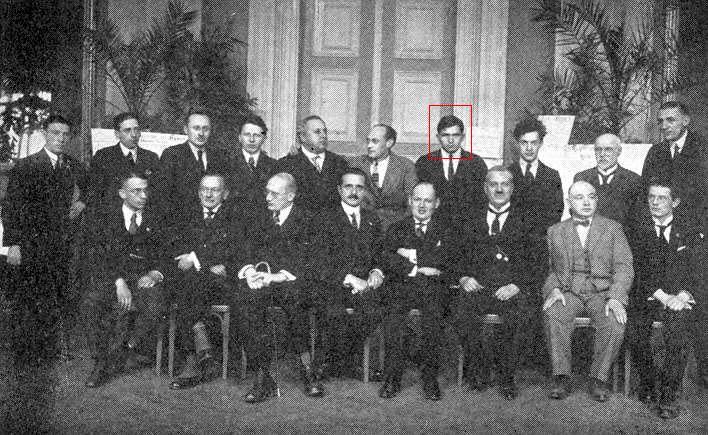
A comparison may be made with the group photograph of Győr, 1924 (from the tournament book by Maróczy), in which both brothers appeared:
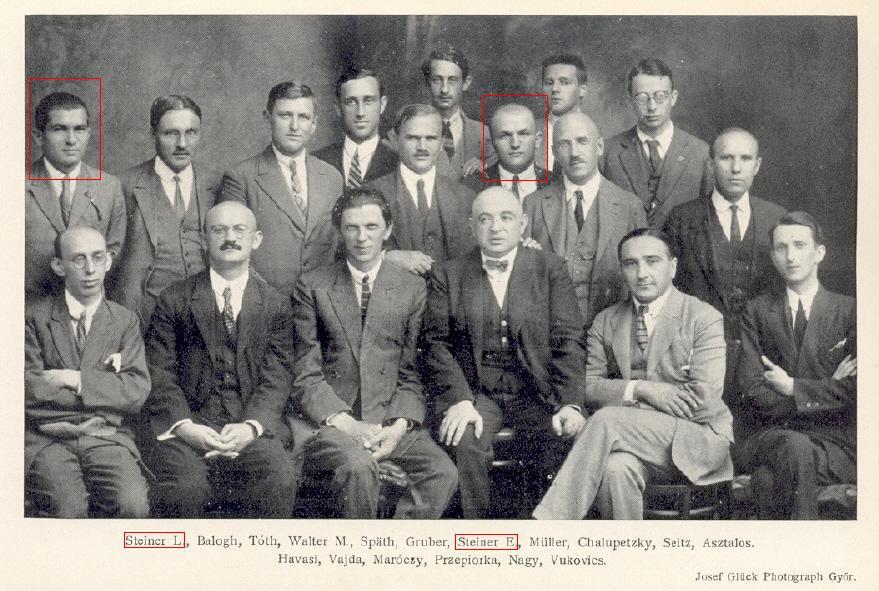
It would seem clear from this evidence that the player in the Meran, 1924 group photograph was Lajos Steiner.
(4808)
Regarding the caption to the Meran, 1924 photograph in C.N. 4669, Luca D’Ambrosio now considers that the person identified in Het Schaakleven as ‘Grim’ was probably Walter Grimm. There is a reference to ‘Grimm Walter, Referendar, Augsburg’ in the Kurzeitung und Fremdenliste Meran, 9 February 1924, page 4.
(4962)
Luca D’Ambrosio asks when the term ‘Meran Variation’ (or ‘Meran Defence’) first appeared in chess literature. He cites a note to the game Bogoljubow v Maróczy (after 1 d4 d5 2 c4 c6 3 Nf3 Nf6 4 e3 e6 5 Nbd2) on page 318 of the German edition of Alekhine’s New York, 1924 tournament book:
‘Offenbar um die Meraner Variante (5 Sb1-c3 Sb8-d7 6 Lf1-d3 d5-c4:! usw.) zu vermeiden.’
The note appears on page 232 of the English edition.
We add that Das Grossmeister-Turnier New York 1924 was published in or around February 1925. It was reviewed on page 69 of the March 1925 Deutsche Schachzeitung and on pages 42-43 of the March 1925 American Chess Bulletin. The latter source also stated that publication of the English-language edition was imminent:
‘After many unforeseen and more or less vexatious delays, of which translation from the German was by no means the least, the home edition of the New York Tournament Book has at last reached the bindery ...’
The Meran tournament in question took place in February 1924, and our correspondent is therefore seeking occurrences of a term such as ‘Meran Variation’ between that time and the appearance of the New York tournament book approximately one year later.
(5414)
A portrait of Arthur Reynolds was published on page 282 of CHESS, 14 April 1939, accompanying the article ‘Meran Defence Crack Exposed’ (see C.N. 4635 above):
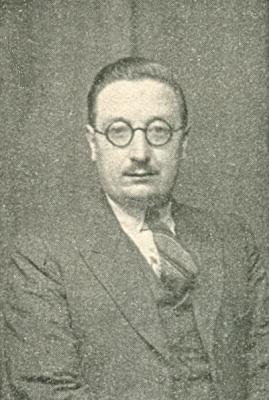
Arthur Reynolds
This picture was also given in Olimpiu G. Urcan’s book on E.E. Colman, Surviving Changi (Singapore, 2007). See pages 154-155 for some information about Reynolds’ demise in the Far East. Another source is the Quotes & Queries item 4023 (mainly written by W. Ritson Morry) on pages 150-152 of the March 1980 BCM.
Reynolds’ death was mentioned on pages 193 and 198 of CHESS, September 1944, but not in the BCM at the time. CHESS reported that he had ‘died a prisoner in the hands of the Japanese’. The above-mentioned article by Ritson Morry stated that Reynolds was killed on board a Japanese prison ship which was torpedoed by a US submarine.
(6069)
See too C.N. 6075.
Some jottings are offered on a game which used to be fairly well-known, and especially to opening theoreticians:
Árpád Vajda – Stefano Rosselli del Turco1 d4 Nf6 2 c4 e6 3 Nc3 d5 4 Nf3 Nbd7 5 e3 c6 6 Bd3 dxc4 7 Bxc4 b5 8 Bd3 a6 9 e4 c5 10 e5 cxd4 11 Nxb5 Nxe5 12 Nxe5 axb5
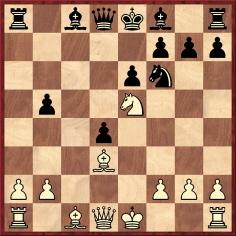
13 O-O Qd5 14 Qe2 Rb8 15 Bg5 Bd6 16 f4 Bxe5 17 fxe5 Nd7 18 Rxf7 Kxf7 19 Qh5+ g6 20 Rf1+ Nf6 21 Rxf6+ Ke8 22 Bxg6+ Kd7 23 Bd3 Kc7 24 Rf4 Bd7 25 Be7 Rbc8 26 b4 Kb6 27 Bc5+ Rxc5 28 bxc5+ Qxc5 29 Qe2 Bc6 30 h3 Rg8 31 g4 Drawn.
The game’s appearance on page 98 of the May-June 1931 issue of Československý Šach:
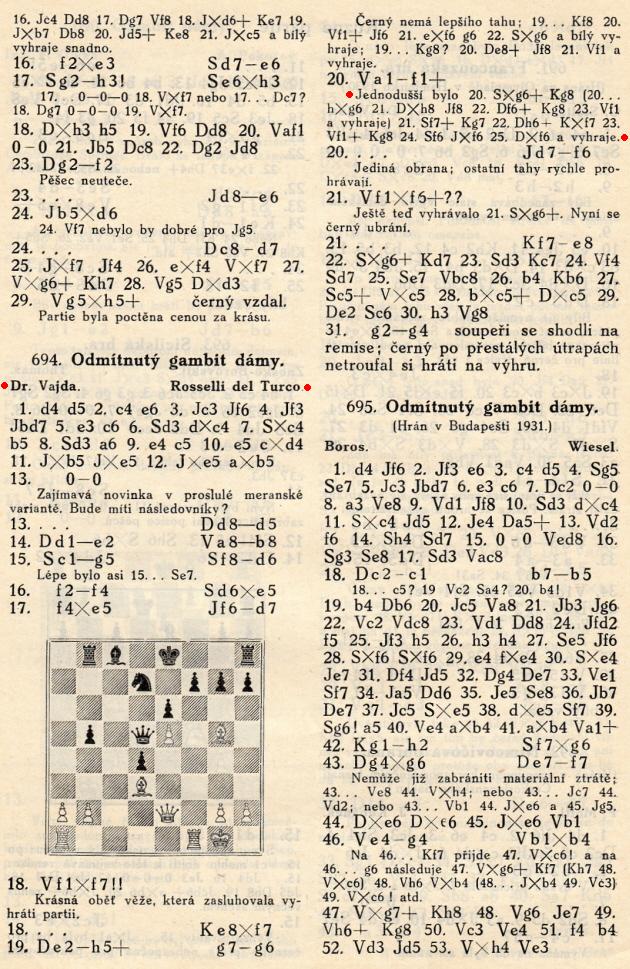
There was scrutiny of Vajda’s opening play in the article ‘Eine Neuerung in der Meraner Variante’ by L. Rellstab on pages 14-18 of Ranneforths Schachkalender 1932. Below are the first two pages:
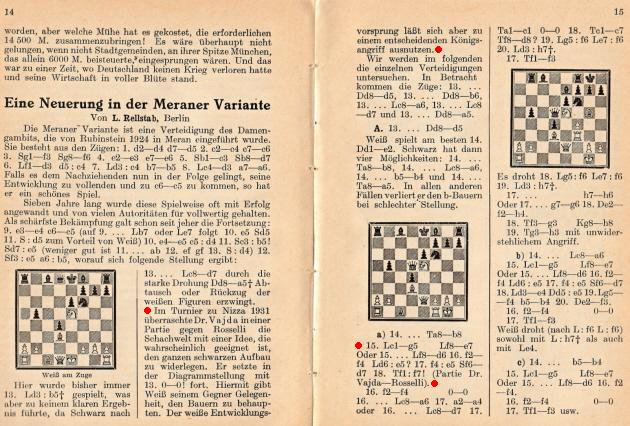
Our particular interest, though, is the note to White’s 20th move in the Czech magazine, which states that in this position ...
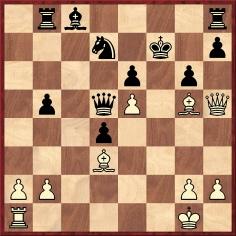
... instead of 20 Rf1+ it was simpler to play 20 Bxg6+, one variation being 20...hxg6 21 Qxh8 Nf8 22 Qf6+ Kg8 23 Rf1 and wins.
However, in that line Black has a straightforward, if uncommon, way of staying a piece ahead:
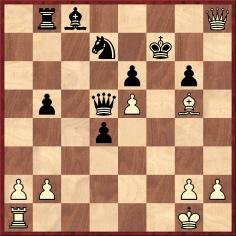
21...Qxg2+ 22 Kxg2 Bb7+.
This was pointed out by a reader of Chess Review, J.J. Leary of Philadelphia, on page 229 of the October 1938 issue in connection with a game between Polland and Kashdan which followed Vajda v Rosselli del Turco until move 15. It had been annotated by Fred Reinfeld on pages 186-187 of the August 1938 Chess Review.
David Polland – Isaac Kashdan
Boston, July 1938
Queen’s Gambit Declined
1 c4 Nf6 2 Nf3 e6 3 Nc3 d5 4 d4 c6 5 e3 Nbd7 6 Bd3 dxc4 7 Bxc4 b5 8 Bd3 a6 9 e4 c5 10 e5 cxd4 11 Nxb5 Nxe5 12 Nxe5 axb5 13 O-O Qd5 14 Qe2 Rb8 15 Bg5 Be7 (‘A pretty way of losing is 15...Bd6 16 f4 Bxe5?? 17 fxe5 Nd7 18 Rxf7!! Kxf7 19 Qh5+ g6 20 Bxg6+ hxg6 21 Qxh8 and 22 Rf1+ butchers Black (analysis by Vajda)’ – Reinfeld.) 16 f4 O-O 17 Rf3 h6 18 Rh3 Bb7 19 Rf1 Rfc8 20 Bxf6 Bxf6 21 Ng4 Kf8 22 Nxf6 gxf6 23 Rxh6 Ke7 24 b3 Rc3 25 Rh5 f5 26 Rxf5 Qxg2+ 27 Qxg2 Bxg2 28 Re1 Bh3 29 Rxb5 Rg8+ 30 White resigns.
The moves in Reinfeld’s note were misnumbered, and ‘Vadja’ was given instead of Vajda. The misspelling and analysis were corrected when the Polland v Kashdan game was published on pages 59-60 of Reinfeld’s Year Book of the American Chess Federation (New York, 1939):
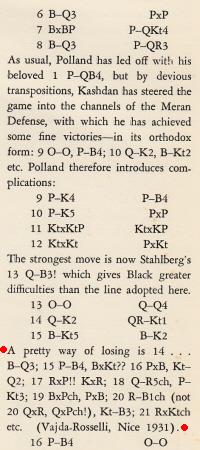
Had Reinfeld been correct to suggest in Chess Review that Vajda himself missed 21...Qxg2+ in analysis?
(7754)
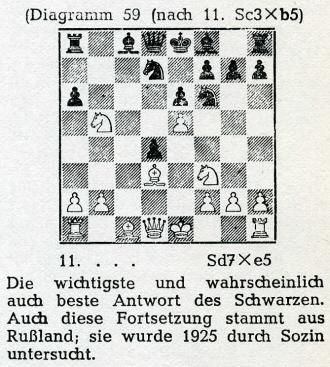
The above comes from page 69 of part three of Max Euwe’s Theorie der Schach-Eröffnungen (Berlin-Frohnau, 1966) and has been forwarded by Luca D’Ambrosio, who asks about Sozin’s exact involvement in the history of the move 11...Nxe5 (after 1 d4 d5 2 c4 c6 3 Nf3 Nf6 4 Nc3 e6 5 e3 Nbd7 6 Bd3 dxc4 7 Bxc4 b5 8 Bd3 a6 9 e4 c5 10 e5 cxd4 11 Nxb5).
We note that on page 165 of Championship Chess (London, 1950) Botvinnik referred to 11...Nxe5 as ‘Sozin’s rejoinder to Blumenfeld’s plan (11 KtxKtP)’. Annotating a game against Reshevsky, Botvinnik wrote on page 274 of the September 1955 Chess Review regarding 11...Nxe5:
‘Black’s witty, clever and safe continuation was found by master B. Sozin 30 years ago.’
See also page 280 of the September 1955 BCM.
On page 139 of the September 1933 Schweizerische Schachzeitung Ernst Grünfeld referred to 11...Nxe5 as ‘le fameux coup indiqué par l’analyste russe Sosin’. An early game in which the move occurred was I. Rabinovich v B. Verlinsky, Moscow, 1925. See pages 157-158 of Bogoljubow’s tournament book.
Readers’ assistance with tracing further information about Sozin and 11...Nxe5 will be appreciated.
(7813)
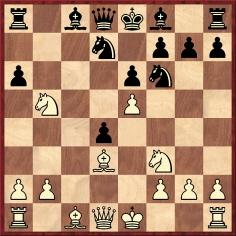
Position after 11 Nxb5
Dominique Thimognier (Fondettes, France) notes that the Italian master Remo Calapso claimed paternity of the 11...Nxe5 variation in the Meran Defence, as recorded in Remo Calapso by E. Giudici and V. Nestler (Santa Maria Capua Vetere, 1976). Page 70 says that Calapso played the move in a correspondence game against Pierre Morra, which is given on pages 71-72 with Calapso’s notes from the October 1926 L’Italia Scacchistica. Moreover, pages 72-74 of the book have his article on the opening from the Italian magazine’s January 1926 issue.
The Morra v Calapso game was played from 28 June 1925 to 30 June 1926, whereas the Rabinovich v Verlinsky game mentioned in C.N. 7813 was played on 29 November 1925.
A footnote on page 70 of the Calapso book adds Tartakower’s statement that Sosin and Calapso discovered the move 11...Nxe5 simultaneously in 1925:
‘Esta réplica fue descubierta simultáneamente por Sosin y por Galapso [sic] en 1925.’
Source: page 97 of Ideas modernas en las aperturas de ajedrez by S. Tartakower (Buenos Aires, various editions).
(7843)
Luca D’Ambrosio notes that in the position after 1 d4 Nf6 2 c4 e6 3 Nf3 d5 4 Nc3 c6 5 e3 Nbd7 6 Bd3 dxc4 7 Bxc4 b5 8 Bd3 a6 9 e4 c5 10 e5 cxd4 11 Nxb5 the move 11...Nxe5 is ascribed to Georges Renaud on page 143 of the May 1925 Deutsche Schachzeitung (see the illustration below), on page 352 of the July-September 1927 Kagans Neueste Schachnachrichten and on page 405 of André Chéron’s Traité complet d’échecs (Brussels, 1927).
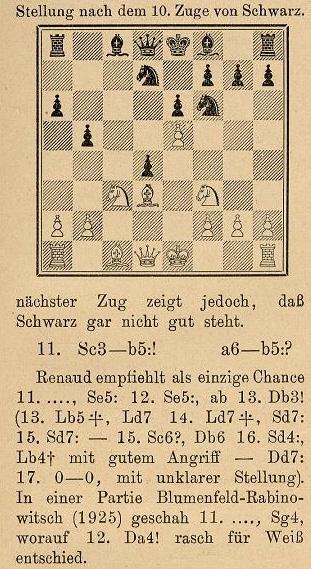
Our correspondent asks when Renaud recommended or played 11...Nxe5.
(7964)
Just published: Die internationalen Schachturniere zu Meran 1924 und 1926 by Luca D’Ambrosio (Bolzano, 2014), a deeply researched, luxuriously produced hardback (500 large pages). With the author’s permission two photographs are reproduced below, from pages 108 and 389 respectively:
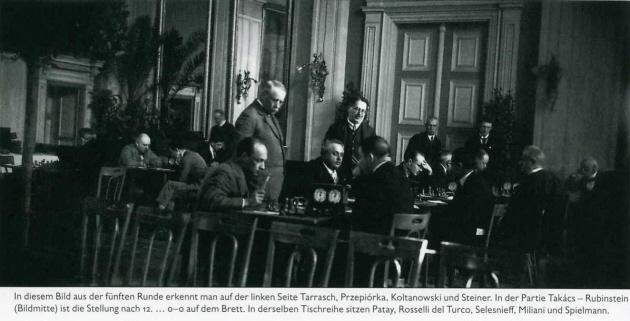
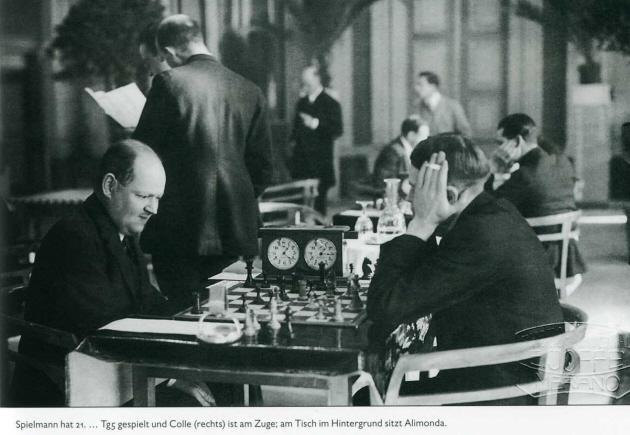
(8657)
To the Archives
for other feature articles.
Copyright Edward Winter. All rights reserved.